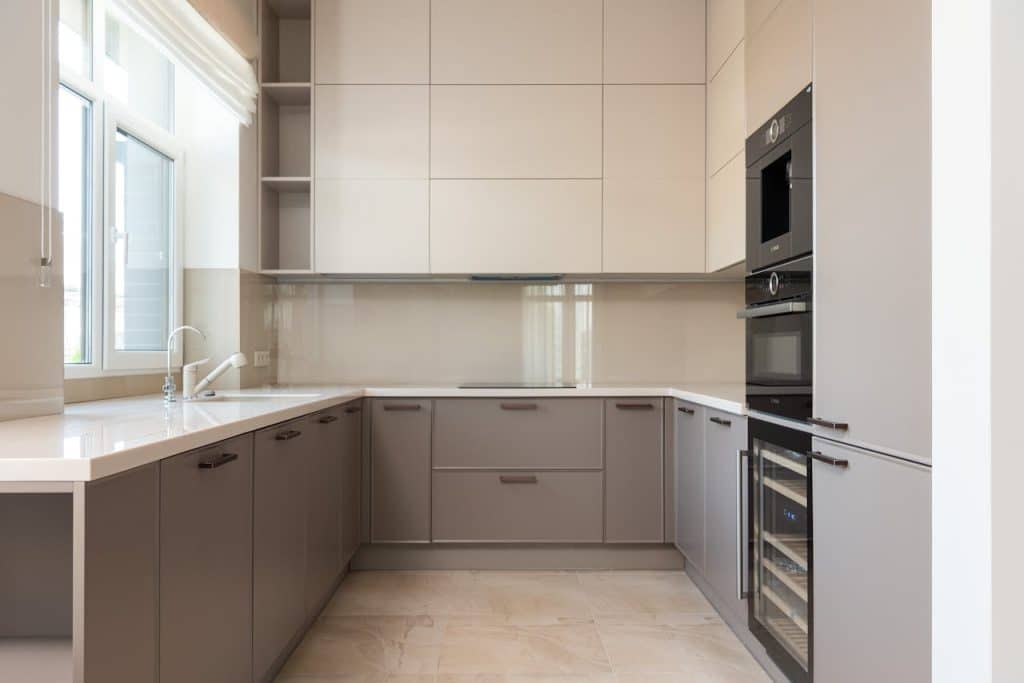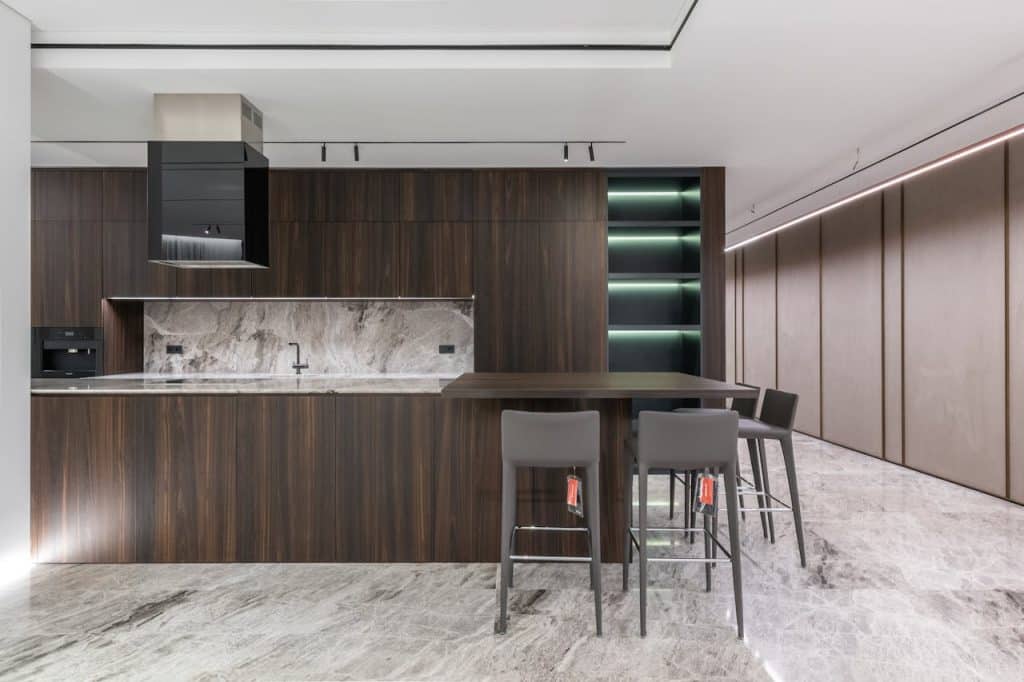Key Takeaways
- Upgrading to a modern kitchen faucet improves both daily functionality and kitchen aesthetics. It offers efficient water use and an updated design for any home.
- Determining your home’s needs and whether your plumbing system is compatible are important factors to consider when selecting a practical faucet that will save you money over time.
- By choosing hardy materials and finishes and accounting for ergonomic and water-saving aspects, you can increase comfort, minimize upkeep, and promote conservation.
- By understanding the effects of hard water in Sonoma County, homeowners can choose faucet materials that prevent corrosion and install effective water treatment options.
- Adhering to local water conservation rules and older homes’ plumbing limitations keeps your new shiny faucet installation smooth and regulation-friendly.
- Utilizing professional, local plumbers ensures compliance with local plumbing codes and offers personalized service and professional installation for durable results.
That’s what kitchen faucet upgrades in Sonoma County are all about – choosing new taps that function better and fit beautifully in our homes. Lots of locals are in the market for water-saving faucets, stylish smart home-compatible fixtures, and robust, long-lasting kitchen taps. Most homes in Sonoma County upgrade to kitchen faucets in stainless steel, brushed nickel, or matte black, as these complement various kitchen décor. Switching to a new faucet can make your kitchen easier to clean and use daily. A few new models even feature pull-down sprayers or touchless sensors, which help speed up everyday tasks. For the green-minded, quite a few options adhere to stringent water regulations. The middle pane will display details about these selections.

Your Sonoma Faucet Upgrade Guide
Contemporary kitchen faucet upgrades provide both functional perks and a stylistic lift. Newer faucets have better controls, less dripping, and a refreshed style. Most are designed to conserve water and reduce bill expenses over time. Selecting the proper material is crucial for enduring value. Reference the table below for a summary.
Material | Durability Feature | Common Finishes |
Stainless Steel | Rust-resistant, strong | Brushed, polished |
Brass | Tough, corrosion-resistant | Chrome, antique brass |
Zinc Alloy | Affordable, less durable | Chrome, matte |
Plastic | Lightweight, least durable | White, colored |
Sonoma faucets come in all styles from sleek modern to classic, matching any décor. Pull-down sprayers, one-handled and waterfall designs, create both convenience and style. Selecting a premium faucet results in fewer drips, superior flow, and the opportunity to enhance your kitchen’s experience and efficacy while conserving water in the long run.
1. Assess Need
Leaks, rust, or faded finishes indicate it’s time for an upgrade. All those repairs add up, and it’s more cost-effective to replace them anyway. Heavy kitchen use, such as larger families or shared homes, may require sturdier models. Always inspect your plumbing for compatibility, as older systems might require adapters or updates for new fixtures.
2. Define Style
Pull-down sprayers work for bustling kitchens, and waterfall faucets complement open modern layouts. Choose from finishes—matte black, brushed stainless, or polished chrome—that complement your cabinets and counters. Legacy brands like Moen and Kohler have lines that blend looks and dependable performance. Custom handles or striking forms make your kitchen special.
3. Prioritize Function
Check for multi-spray settings and ergonomic handles for everyday use. Ergonomic levers come in handy during those long cooking marathons. Built-in filtration systems are a bonus for taste and safety. Premium valves and seals reduce maintenance.
4. Consider Water
Hard water is common in Sonoma. It can clog and stain faucets. Water softeners slow mineral buildup, extending fixture life. Test your water pressure to avoid lackluster flow with a new faucet. Know local water-saving rules before picking a model.
5. Choose Professional
A pro plumber guarantees a hassle-free install, particularly if codes or vintage plumbing are factors. Check reviews for local pros like Yorkshire Plumbing & Drain Services. Always ask for itemized quotes so you don’t get surprised. There should be some friendly, local plumbers.
Sonoma-Specific Considerations
Sonoma County’s specific climate, aging homes, and local regulations influence how locals go about kitchen faucet replacements. Understanding these local factors ensures new fixtures deliver long-term reliability and satisfy both code and practical requirements.
Hard Water
Hard water is a common issue for many homes in Sonoma County, particularly in regions such as zip codes 95476 and 95403. Symptoms include white or chalky deposits around faucet spouts, diminished water pressure, and a gritty feel on fixtures. These mineral deposits can reduce the life span of standard faucets, so cleaning and maintenance are important.
- Soft water is installed for the whole home via a water softener.
- Use in-line water filters at the kitchen sink.
- Choose faucets with ceramic disc valves to minimize wear.
- Regularly descale aerators and faucet heads with vinegar.
- Apply protective coatings to faucet surfaces.
For homes with persistent hard water, faucet finishes like stainless or solid brass are more corrosion and scale-resistant than chrome or plastic. By consulting with a local plumber, you can make sure solutions are tailored for the water chemistry of Sonoma neighborhoods.
Conservation Rules
We have very strict conservation rules here in Sonoma County during the drought seasons, which directly affect fixture decisions. Faucets need to be within local water flow limits, typically 6 liters per minute or less, and frequently need WaterSense certification, which is their version of EPA. This aids the county’s larger sustainability initiatives and assists residents in reducing their environmental footprint and utility costs.
- Check Sonoma County’s latest water conservation requirements.
- Look for WaterSense-labeled faucets when shopping.
- Select models with aerators that limit flow to 6 L per minute.
- Ask retailers or plumbers about compliance documentation.
Seasonal restrictions may limit when installations can take place, so schedule upgrades accordingly.
Older Homes
A lot of Sonoma homes, particularly in the 95442 zip code, are decades old or older. When you’re upgrading faucets in these properties, that means contending with aging or incompatible pipes, non-standard fittings, or historical preservation regulations that restrict your design options. A detailed evaluation from a licensed plumber will show what’s required before work begins. They’ll sketch out a strategic plan, schedule, and potential barriers. Freeze-resistant and earthquake-resistant fixtures are often logical in light of Sonoma’s climate and seismic risk. Expert craftsmen keep job sites neat and safe and honor the home’s one-of-a-kind personality, particularly in cases where vintage style counts.
What To Expect During Installation
Here’s what you can expect when installing a kitchen faucet in Sonoma County. It may begin straightforward enough, but minor snafus or system quirks can easily make a quick job drag on much longer. For most standard replacements, where you simply exchange an old faucet for a comparable new model, a seasoned DIYer can complete the job in an hour or two. These tasks typically require just simple tools and some patience. If the plumbing must be altered or you’re installing a faucet where there was none, then schedule for a longer window of around seven or eight hours. That means getting the space ready, protecting your countertops and floors, taking out the old unit, and hooking up new supply lines.
Price is a consideration. The typical kitchen faucet installation costs $262 on average, though prices can range from $91 to $600 based on the faucet’s finish and style, as well as any additional features such as a water filter or hot water tap. Running a new water line, which is sometimes required for new installations, can add up fast. Count on paying up to $15 per linear foot. You can’t forget about permit fees either, as local codes may have you budgeting $100 to $250 for upgrades or new installs. If you engage a plumber, hourly labor is between $45 and $200, with the majority of jobs costing $260 to $480 in labor alone, particularly if additional work is required to connect new fittings to old plumbing.
Before scheduling a plumber, it’s worth troubleshooting some common faucet ailments like dripping, leaks around the base, or weak water pressure. Occasionally, the repair is as rudimentary as a loose nut that needs tightening or an aerator filled with mineral build-up that needs clearing. If you notice water pooling under the sink or hear strange noises emanating from your pipes, this might be indicative of a more serious issue that requires professional assistance. Maintaining a checklist of common problems, such as worn washers, leaky cartridges, or clogged supply lines, can help you determine when to DIY and when to dial for assistance.

Troubleshooting Common Faucet Issues
When upgrading kitchen faucets in Sonoma County, knowing how to troubleshoot common problems is essential for maintaining a smooth, efficient kitchen. Minor issues can escalate quickly if ignored, so regular attention and preventive care go a long way.
- Check for leaks regularly. Even a slow drip can waste hundreds of gallons of water each year. Repair leaks promptly to conserve water and reduce utility costs.
- Clean and inspect monthly. Look for corrosion, water spots, or buildup around the base of your faucet. Early detection prevents minor issues from becoming expensive repairs.
- Maintain aerators and spray heads. Mineral residue can disrupt water flow or cause odd noises. Remove and soak these parts in vinegar to dissolve buildup and restore proper performance.
- Avoid overtightening handles. Turning handles too far can damage internal components. Stop once resistance is felt to prevent unnecessary wear.
- Use a drain strainer. This simple tool keeps food particles and debris out of your pipes, preventing blockages and unpleasant sink backups.
- Pay attention to unusual sounds or pressure changes. Gurgling, rattling, or inconsistent water pressure may signal an underlying problem. Inspect connections and valves, or contact a plumber if the issue persists.
- Perform small repairs promptly. Replacing washers, cleaning components, or descaling can often be done in under an hour using basic tools. Staying proactive prevents minor wear from escalating into major damage.
Smart Faucet Considerations
Modern technology has made kitchen life more convenient through smart faucets, which offer advanced features like touchless and voice control.
- Enjoy hands-free operation. These faucets improve hygiene by letting you activate water flow without touching the handle.
- Save water automatically. Smart models shut off on their own if left running, minimizing waste.
- Check for compatibility. Before installing, verify that your smart faucet will work with your current plumbing and any smart home assistants you use.
- Stay up to date. Exploring the latest faucet technology helps you choose a design that complements your kitchen’s style and functionality.
- Schedule annual plumbing inspections. Regular professional assessments identify early signs of wear or leaks, ensuring long-term reliability and optimal performance.
Homeowners in Sonoma County can make their kitchens look great and work better by mixing smart upgrades with regular maintenance. This way, they can avoid annoying problems with their faucets.
Upgrading Your Kitchen: The Next Level With Smart Faucets
Smart faucets are reshaping kitchens by merging innovative technology with classic design to improve efficiency and sustainability. For Sonoma County homeowners, these upgrades go beyond visual appeal—they’re practical tools that save time, money, and resources.
- Blending technology and convenience: Smart faucets often include motion sensors, touch controls, and app connectivity. Homeowners can track water usage, monitor temperature, and gain insights into consumption patterns directly from their devices.
- Encouraging conservation: Access to real-time water data helps identify waste and develop smarter usage habits. This is especially valuable for those focused on reducing utility bills and conserving water amid growing environmental concerns.
- Detecting issues early: Many smart faucets send alerts when they detect leaks or irregular usage, preventing costly damage and unnecessary waste.
- Promoting energy efficiency: Usage reports can show when the most hot water is consumed, helping users shift routines to lower energy demand. For example, discovering that most hot water is used in the morning may inspire small adjustments—like washing hands with cooler water—that add up to significant savings.
- A growing trend: The global smart faucet market is expanding rapidly, with a 6% annual growth rate and projections reaching $3 billion by 2032. This growth shows that consumers value both convenience and the long-term savings these devices provide.
- Potential drawbacks: Most smart faucets rely on electricity, meaning that during a power outage, manual operation may be required. While some find this inconvenient, many still believe the benefits far outweigh the occasional hassle.
- Local expertise matters: In Sonoma County, working with local plumbers ensures installations meet regional codes and address specific plumbing systems. Local professionals offer faster service, understand community water-saving priorities, and help homeowners make sustainable choices that benefit both their homes and the local economy.
Upgrading to a smart faucet is not just a modern design choice—it’s a step toward a more efficient, connected, and environmentally conscious home.
Common Pitfalls To Avoid
When upgrading or replacing a kitchen faucet, many homeowners focus on design and features but overlook practical factors that impact daily usability and long-term satisfaction. Avoiding a few common mistakes can save you from installation headaches, costly returns, or disappointing performance. Here are key pitfalls to watch out for:
- Oversized faucet for a shallow sink: It’s tempting to pick a tall, dramatic faucet, but if your sink is shallow, this can lead to excessive splashing and water messes on surrounding countertops. Always consider faucet height and reach in proportion to sink depth. Measure the clearance between the spout and the basin to ensure smooth, splash-free use.
- Ignoring under-sink space: Modern faucets—especially those with touchless sensors, built-in filtration, or pull-down sprayers—often require additional components beneath the sink. If your plumbing area is cramped, these parts may not fit properly or could make routine maintenance difficult. Before purchasing, check that there’s adequate room for batteries, control boxes, or filtration units.
- Choosing a finish only by photo: Faucet finishes look different in person due to lighting variations, reflections, and texture. What seems like a perfect brushed nickel online may appear dull or too shiny under your kitchen lighting. Visit a showroom or order finish samples when possible, and consider options that resist fingerprints and water spots for easier cleaning.
- Skipping compatibility checks: Not all faucets fit every sink. The number of mounting holes, their spacing, and supply line connections vary by model. Before buying, verify your sink’s hole configuration and match it with the faucet’s requirements. Adapters are sometimes available, but ensuring proper compatibility upfront prevents leaks or installation delays.
- Forgetting maintenance needs: A bargain faucet can seem like a smart choice, but lower-cost models often use cheaper internal components that wear out faster. They may need frequent tightening, cartridge replacements, or re-sealing. Consider total lifetime costs, including maintenance and part availability, when deciding between budget and premium options.
Why Choose A Local Expert?
When upgrading your kitchen faucet, hiring a local professional is often the smartest move—especially in areas like Sonoma County, where strict building codes and unique local conditions come into play. Local plumbers and contractors bring practical experience, faster response times, and personalized service that out-of-town providers simply can’t match.
- Knowledge of Local Codes and Conditions:
Local experts are well-versed in regional building regulations and plumbing requirements, ensuring your upgrade meets code and avoids future fines or complications. They know which materials, finishes, and brands perform best in the area’s specific water conditions—such as hard water resistance and rust prevention—helping you select a faucet that lasts and looks great. - Fast Response and Flexible Scheduling:
When emergencies strike, such as leaks or burst pipes, local pros can respond quickly—often the same day. Their proximity means shorter wait times and faster project completion, getting your kitchen back to normal sooner. They also tend to schedule around your availability, making the process more convenient. - Transparent Pricing and Honest Estimates:
Local professionals depend on community trust and word-of-mouth reputation. They typically offer clear, upfront pricing with fewer hidden costs, and most provide written estimates before work begins so you know exactly what to expect. - Personalized Communication and Care:
A local expert listens carefully to your preferences, explains your options in straightforward language, and provides prompt responses to questions. Because they live and work in the community, they take pride in maintaining their reputation—double-checking their work and offering dependable follow-up support if issues arise. - Access to Local Vendors and Supplies:
Strong relationships with nearby suppliers mean faster access to replacement parts and product samples. If you need a special faucet component or want to compare finishes in person, your local pro can make it happen quickly. - Experience with Older Homes and Complex Setups:
Many Sonoma County homes feature vintage plumbing or unconventional layouts. Local plumbers have the know-how and tools to handle such challenges—arriving prepared with the right fittings and adapters to ensure a smooth, efficient installation.
Conclusion
There are obvious benefits to upgrading a kitchen faucet in Sonoma County. New kitchen faucet upgrades in Sonoma County save water, cut leaks, and fit today’s kitchens. Local shops stock solid brands and parts that fit the region’s water systems. Smart faucets make everyday tasks easy. Touch, voice, and app controls are now available in many homes. Local pros know the quirks of Sonoma plumbing. They solve problems quickly and keep projects flowing. To make the most of an upgrade, use reliable local assistance and inquire about complete information on capabilities. Got questions or want tips for your own kitchen? Contact a local plumber or peruse our blog for more real-world guidance. Your kitchen can flow better with a smart, well-chosen faucet.
Frequently Asked Questions
1. What Should I Consider Before Upgrading My Kitchen Faucet In Sonoma County?
Examine your water pressure, current plumbing, and area water regulations. Select corrosion-resistant supplies and Sonoma-approved water-efficient components.
2. Are There Water Restrictions In Sonoma County That Affect Faucet Choices?
Yeah, Sonoma County likes to save water. Find faucets with flow rates of 6 liters per minute or less to meet local standards.
3. How Long Does A Typical Kitchen Faucet Installation Take?
Typically, a standard installation will require one to two hours. Advanced plumbing or smart faucet features might take longer.
4. Can I Install A New Kitchen Faucet Myself?
Simple installs for seasoned DIYers. For multi-connection configurations or to comply with local codes, use a licensed plumber.
5. What Are The Benefits Of A Smart Kitchen Faucet?
Smart faucets provide touchless control, water-saving capabilities, and temperature precision. They help reduce water waste and make your kitchen more convenient.
6. How Do I Fix A Leaking Kitchen Faucet?
Begin by tightening connections and replacing worn washers or cartridges. If leaks continue, seek a local professional to avoid water damage.
7. Why Should I Hire A Local Sonoma County Pro For Faucet Upgrades?
Local professionals understand Sonoma’s building codes and water standards. They provide safe, compliant installations and can expedite local plumbing fixes.
Faucet Repair & Kitchen Plumbing In Santa Rosa – Fast, Honest, Local Help
Leaky faucets, low water pressure, or plumbing issues in your kitchen can quickly disrupt your day. Don’t let a small drip or faulty fixture turn into a bigger, costlier problem. The trusted team at Yorkshire Plumbing provides expert faucet repair and kitchen plumbing services to keep your home running smoothly.
With nearly a decade of experience and the right tools for the job, we deliver real solutions, not quick fixes. From repairing worn-out faucets and clearing clogs to upgrading sinks, fixtures, and water lines, our licensed plumbers are ready to help.
Whether you’re dealing with a leaky kitchen faucet, planning a remodel, or facing unexpected plumbing trouble, Yorkshire Plumbing has you covered. Call or message us today for a free estimate. We offer same-day service when possible and are always available for urgent jobs.
Yorkshire Plumbing is your go-to, family-owned team for reliable faucet repair and kitchen plumbing in Santa Rosa.
Disclaimer
The information provided on this website is for general informational and educational purposes only and is not intended as professional plumbing or construction advice. You should consult with a licensed plumber or qualified contractor for guidance specific to your home or situation. Do not rely solely on the content of this site to make decisions about plumbing repairs, installations, or maintenance. While we strive to keep the information current and accurate, it may not reflect the most recent industry standards or code requirements. Yorkshire Plumbing & Drain Services disclaims all liability for any actions taken or not taken based on the content of this site, to the fullest extent permitted by law.






